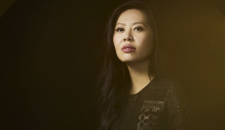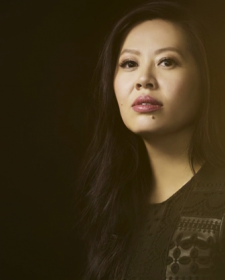I was really nervous to meet her because when you have the privilege to take someone’s portrait I get really nervous and I put a lot of pressure on myself. It was a rainy day in San Francisco and there she was, friendly and lovely. Over the three hours of us chatting and having a good laugh, we realised that both of us actually grew up in adjoining suburbs in Melbourne’s western suburbs. We realised that we were the same age, we actually went to the same high school. She was actually fast-tracked through high school … we would have been in the same class, ‘cos obviously I’m not bright enough to be with her.
The other thing that we realised was, we both experienced racism at high school. It was quite horrible really. I think she only lasted one year at that school. And so, having that conversation with Tan and then having watched her TED talk about being a refugee and the experiences of her family, it had a huge impact on me and I could relate to my own family history in Australia. So, it was really important for me to touch on these issues. That’s why I integrated the mirror into the portrait; instantly I realised that that’s something I wanted to do.
We wanted it to be, you know, really badass. She’s all these amazing things; she’s an entrepreneur, she’s been a community leader, she’s, you know, a leader in technology now and research. She’s leading the research in brain technology so why would this person be depicted anything other than, you know, strong and powerful, and so I guess that was really important to both of us.
I thought it was really important to create a piece that was interactive, that forced the viewer to come into the gallery and not just walk past it but to interact and then to have to ask [a] question, and that’s why, through all these kind of various technologies, it forces people to a) stand in front of it. I hope they then they then have to look into it and work out, I guess, ask themselves who Tan is, what does she do and also look at what she’s contributed to Australia.













